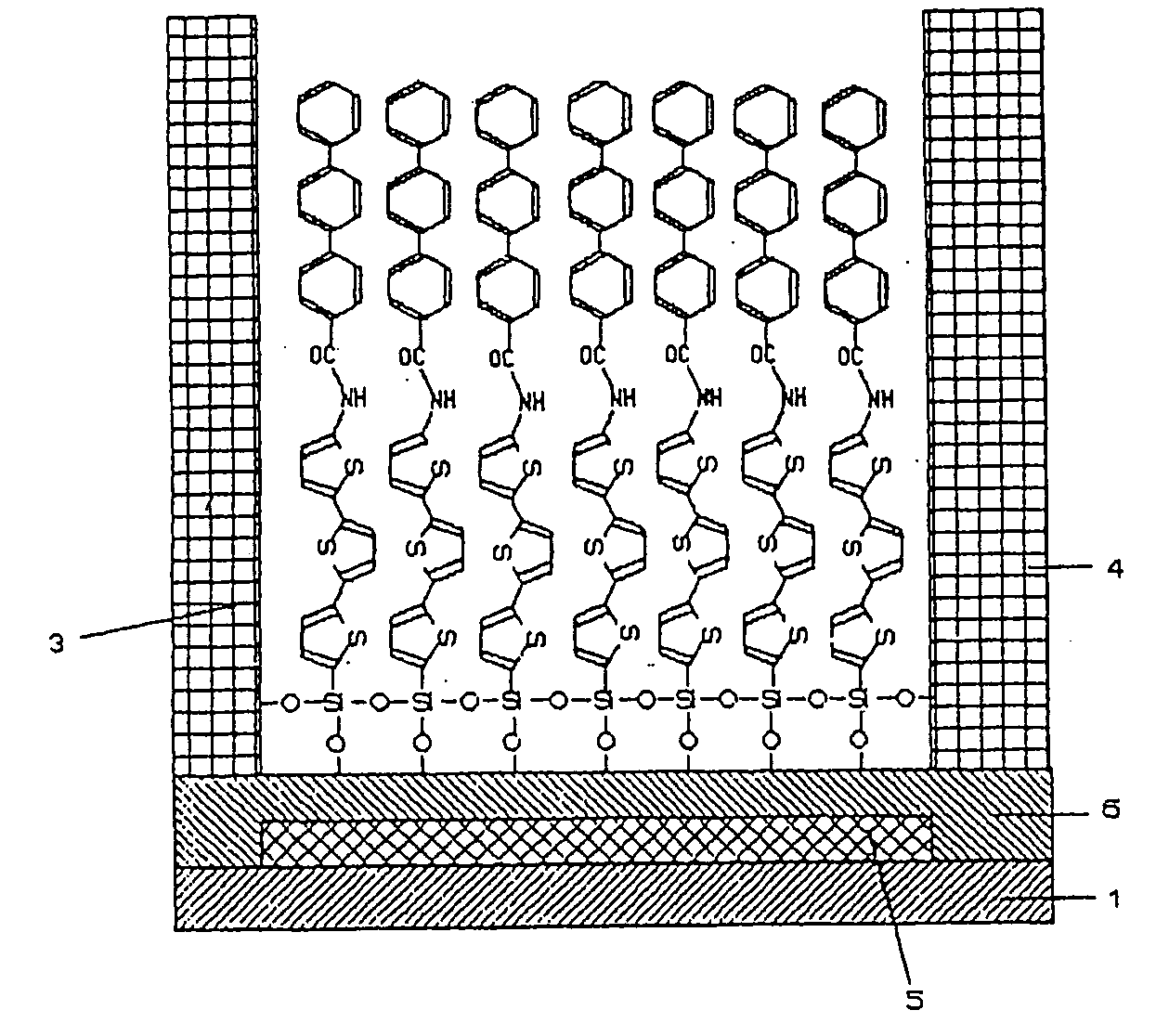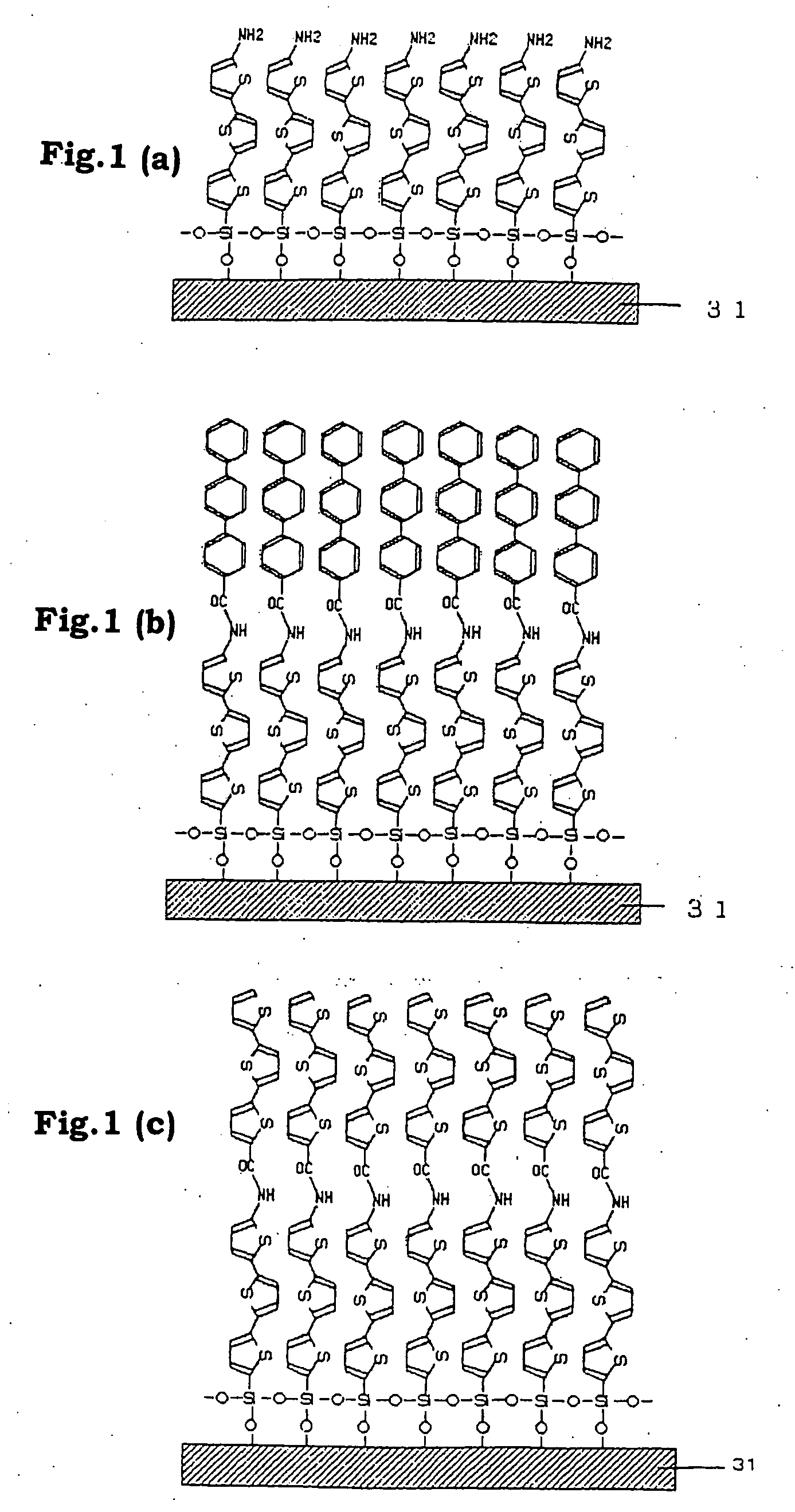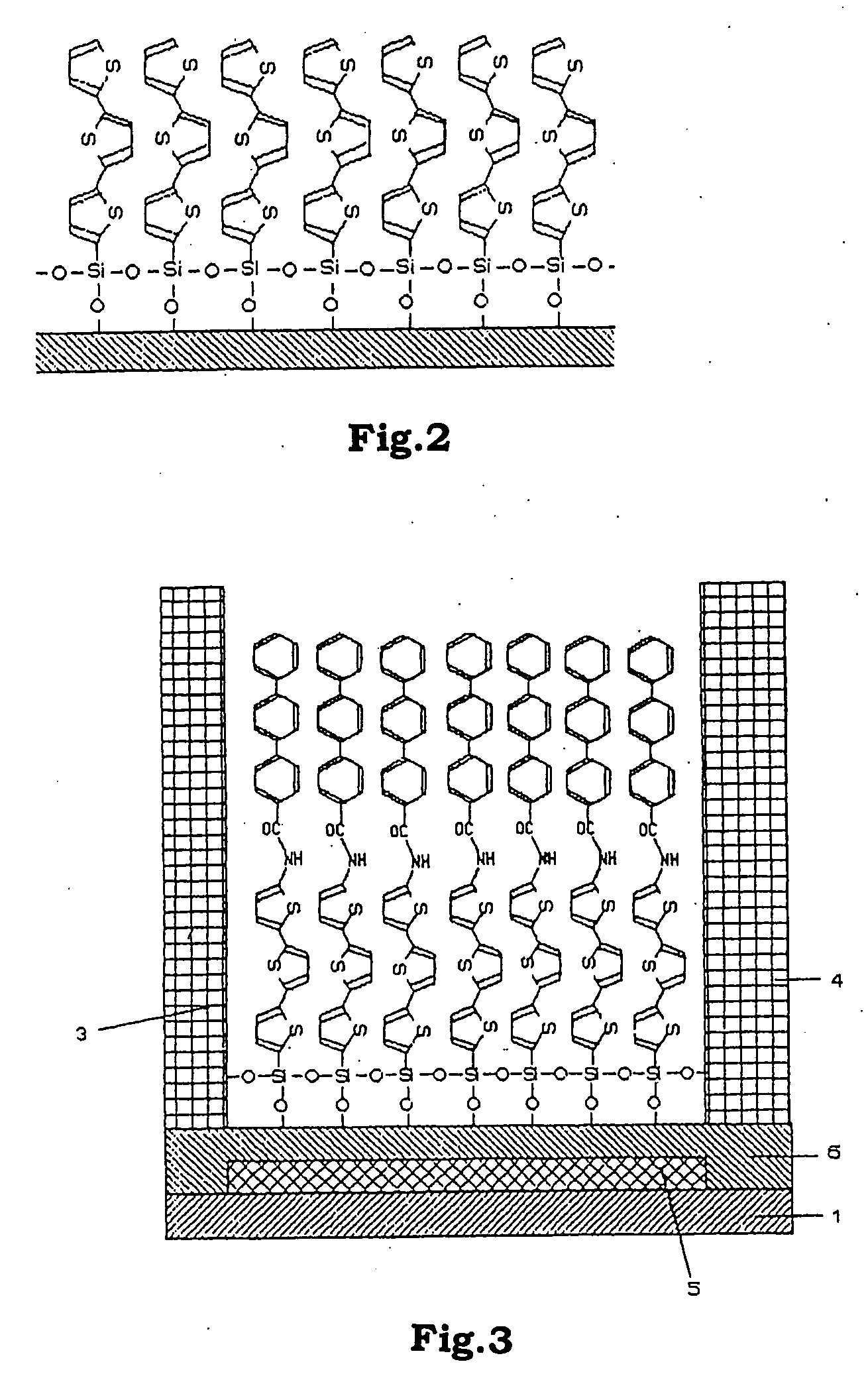Functional organic thin film, organic thin-film transistor, pi-electron conjugated molecule-containing silicon compound, and methods of forming them
a technology of organic thin films and organic thin films, which is applied in the field of functional organic thin films, organic thin films, and electron conjugated molecule-containing silicon compounds, can solve the problems of troublesome manufacturing steps, low strength, and difficult to impart electric conductivity to self-organizing films, etc., to achieve easy crystallization, prevent physical peeling, and simple process
- Summary
- Abstract
- Description
- Claims
- Application Information
AI Technical Summary
Benefits of technology
Problems solved by technology
Method used
Image
Examples
example 1
Synthesis of terphenyltrichlorosilane by Grignard Method
[0121] In a 500 ml glass flask equipped with a stirrer, a reflux condenser, a thermometer and a dropping funnel, 1.5 mole of terphenyl was dissolved in carbon tetrachloride, to which NBS and AIBN were added. The mixture was stirred for 3 hours, and filtered under reduced pressure to obtain bromoterphenyl. Subsequently, in a 500 ml glass flask equipped with a stirrer, a reflux condenser, a thermometer and a dropping funnel, 0.5 mole of metal magnesium and 300 ml of THF (tetrahydrofuran) were put, to which 0.5 mole of the bromoterphenyl was dropwise added at 50 to 60° C. over 2 hours using dropping funnel. After the dropping having been completed, the mixture was aged at 65° C. for 2 hours to prepare Grignard reagent.
[0122] In a 1 liter glass flask equipped with a stirrer, a reflux condenser, a thermometer and a dropping funnel, 1.0 mole of SiCl4 (tetrachlorosilane) and 300 ml of toluene were put and cooled with ice, to which t...
example 2
Synthesis of terthiophenetrichlorosilane by Grignard Method
[0130] In a 500 ml glass flask equipped with a stirrer, a reflux condenser, a thermometer and a dropping funnel, 1.0 mole of terthiophene was dissolved in carbon tetrachloride, to which NBS and AIBN were added. The mixture was stirred for 2.5 hours, and filtered under reduced pressure to obtain bromoterthiophene. Subsequently, in a 500 ml glass flask equipped with a stirrer, a reflux condenser, a thermometer and a dropping funnel, 0.5 mole of metal magnesium and 300 ml of THF (tetrahydrofuran) were charged, to which 0.5 mole of bromoterthiophene was dropwise added at 50 to 60° C. over 2 hours using a dropping funnel. After the dropping having been completed, the mixture was aged at 65° C. for 2 hours to prepare Grignard reagent.
[0131] In a 1 liter glass flask equipped with a stirrer, a reflux condenser, a thermometer and a dropping funnel, 1.5 mole of SiCl4 (tetrachlorosilane) and 300 ml of toluene were charged and cooled ...
example 3
Synthesis of terthiophenetrichlorosilane Utilizing Li
[0139] In one liter glass flask equipped with a stirrer, a thermometer and a dropping funnel, 300 ml of a tetrahydrofuran solution containing 1.0 mole of terthiophene was charged and cooled to −78° C., to which 1.0 mole of n-butyllithium was slowly and dropwise added. Then the mixture was stirred for an hour to yield a lithium salt of terthiophene having the structure represented by the formula (a).
[0140] Then, a solution of tetrachlorosilane in tetrahydrofuran was added to the above mixture and was stirred overnight. Lithium chloride, toluene and unreacted tetrachlorosilane were removed from the reaction solution. Thereafter, this solution was distilled to obtain the title compound at a yield of 45%.
[0141] Regarding the resulting compound, its infrared absorption spectrum and nuclear magnetic resonance were measured, and show the absorptions at the same positions as that of the compound shown in Example 2. Thus, it was confir...
PUM
| Property | Measurement | Unit |
|---|---|---|
| thickness | aaaaa | aaaaa |
| carbon number | aaaaa | aaaaa |
| carbon number | aaaaa | aaaaa |
Abstract
Description
Claims
Application Information
 Login to View More
Login to View More - R&D
- Intellectual Property
- Life Sciences
- Materials
- Tech Scout
- Unparalleled Data Quality
- Higher Quality Content
- 60% Fewer Hallucinations
Browse by: Latest US Patents, China's latest patents, Technical Efficacy Thesaurus, Application Domain, Technology Topic, Popular Technical Reports.
© 2025 PatSnap. All rights reserved.Legal|Privacy policy|Modern Slavery Act Transparency Statement|Sitemap|About US| Contact US: help@patsnap.com



